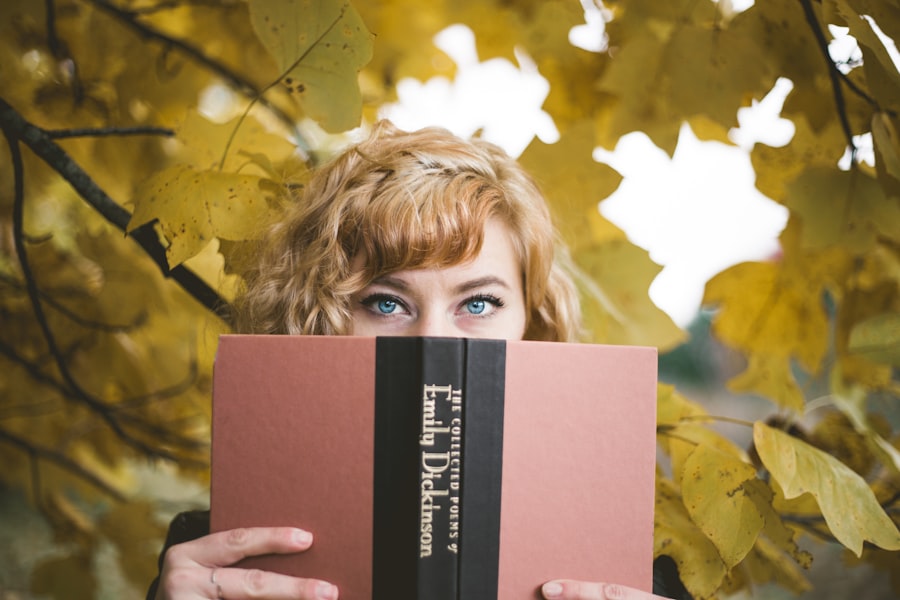Poetry, as an art form, has captivated humanity for centuries, serving as a medium for expression, reflection, and connection. The various forms of poetry provide a framework through which poets can convey their thoughts, emotions, and experiences. Each form carries its own set of rules and conventions, allowing poets to explore different styles and techniques.
From the structured elegance of sonnets to the free-flowing nature of free verse, the diversity of poetry forms enriches the literary landscape and invites readers into a world of imagination and insight. Understanding these forms is essential for both aspiring poets and avid readers, as it opens up new avenues for appreciation and creativity. The exploration of poetry forms is not merely an academic exercise; it is a journey into the heart of human expression.
Each form has evolved over time, influenced by cultural shifts, historical contexts, and individual creativity. As poets experiment with language, rhythm, and structure, they push the boundaries of traditional forms while also paying homage to their roots. This dynamic interplay between tradition and innovation is what makes poetry a living art form.
By delving into the various types of poetry, one can gain a deeper understanding of how poets communicate complex ideas and emotions through carefully chosen words and patterns.
Key Takeaways
- Poetry forms are structured patterns of writing that help poets convey their message in a specific way.
- Understanding the basics of poetry, such as rhyme, meter, and line breaks, is essential for mastering different poetry forms.
- Traditional poetry forms, like sonnets and haikus, have specific rules and structures that have been passed down through generations.
- Modern poetry forms, such as free verse and slam poetry, offer more flexibility and freedom for poets to express themselves.
- Experimental poetry forms, like concrete poetry and found poetry, push the boundaries of traditional poetry and encourage creativity.
Understanding the Basics of Poetry
At its core, poetry is a concentrated form of language that seeks to evoke emotions and provoke thought through the use of imagery, sound, and rhythm. Unlike prose, which often follows a straightforward narrative structure, poetry allows for greater flexibility in expression. Poets utilize devices such as metaphor, simile, alliteration, and enjambment to create layers of meaning and enhance the musicality of their work.
This emphasis on sound and rhythm is what distinguishes poetry from other forms of writing; it invites readers to engage with the text on both an intellectual and emotional level. Moreover, poetry often relies on brevity and precision. Each word carries weight, and poets must choose their language carefully to convey their intended message effectively.
This economy of language can lead to powerful imagery that resonates with readers long after they have finished reading. Understanding the basics of poetry involves recognizing these elements and appreciating how they work together to create a cohesive piece. As one becomes more familiar with poetic techniques, it becomes easier to analyze and interpret poems, revealing the intricate layers of meaning that lie beneath the surface.
Traditional Poetry Forms

Traditional poetry forms have stood the test of time, offering poets a structured way to express their thoughts and feelings. Among the most well-known traditional forms are the sonnet, villanelle, haiku, and limerick. The sonnet, for instance, typically consists of 14 lines written in iambic pentameter, often exploring themes of love or nature.
Its rigid structure encourages poets to be creative within constraints, leading to some of the most celebrated works in literary history. The villanelle, with its intricate rhyme scheme and repetition, creates a musical quality that enhances its emotional impact. These forms not only provide a framework for expression but also challenge poets to innovate within established boundaries.
In addition to their structural elements, traditional poetry forms often carry cultural significance. For example, the haiku originated in Japan and reflects a deep connection to nature and simplicity. Its three-line structure encourages brevity and clarity, allowing poets to capture fleeting moments in time.
Similarly, the limerick’s playful tone and rhythmic quality make it a favorite among both children and adults alike. By engaging with these traditional forms, poets can tap into a rich history of literary expression while also contributing their unique voice to the ongoing conversation about what poetry can be.
Modern Poetry Forms
| Poetry Form | Description |
|---|---|
| Sonnet | A 14-line poem with a specific rhyme scheme, often exploring themes of love and beauty. |
| Haiku | A traditional Japanese form with three lines and a 5-7-5 syllable structure, often focused on nature. |
| Free Verse | Poetry without a regular meter or rhyme scheme, allowing for greater freedom and creativity. |
| Villanelle | A 19-line poem with a specific rhyme scheme and repeated lines, often exploring themes of obsession and loss. |
As society has evolved, so too has poetry. Modern poetry forms reflect contemporary themes and styles that resonate with today’s readers. Free verse is perhaps the most prominent modern form, characterized by its lack of strict meter or rhyme scheme.
This freedom allows poets to experiment with line breaks, spacing, and punctuation in ways that reflect their individual voice and style. Poets like Walt Whitman and T.S. Eliot have embraced free verse to convey complex ideas about identity, society, and existence without being confined by traditional structures.
Another significant modern form is spoken word poetry, which emphasizes performance as much as written text. This dynamic art form combines elements of theater with poetic expression, allowing poets to engage directly with their audience through rhythm, tone, and body language. Spoken word has gained popularity in recent years as a means for marginalized voices to share their stories and experiences in powerful ways.
The modern landscape of poetry is diverse and ever-changing, reflecting the complexities of contemporary life while inviting new generations of poets to explore their creativity without limitations.
Experimental Poetry Forms
In addition to traditional and modern forms, experimental poetry has emerged as a vibrant avenue for artistic exploration. This category encompasses a wide range of styles that challenge conventional notions of what poetry can be. Poets may play with visual elements by incorporating typography or creating concrete poems that take on shapes related to their subject matter.
Others may experiment with language itself by using found text or erasure techniques to create new meanings from existing works. These innovative approaches invite readers to engage with poetry in unexpected ways. Moreover, experimental poetry often blurs the lines between genres, incorporating elements from visual art, music, and performance.
This interdisciplinary approach allows poets to push boundaries further than ever before, creating immersive experiences that transcend traditional reading practices. The rise of digital media has also influenced experimental poetry; online platforms enable poets to share multimedia works that combine text with sound or visual components. As poets continue to explore new frontiers in creativity, experimental forms challenge us to reconsider our understanding of poetry itself.
How to Choose the Right Poetry Form

Choosing the right poetry form can significantly impact how a poet conveys their message or emotion. The decision often hinges on several factors: the subject matter at hand, the intended audience, and the poet’s personal style or voice. For instance, if a poet wishes to explore themes of love or nature in a nuanced way, they might opt for a sonnet or villanelle due to their established conventions around these topics.
Conversely, if the poet seeks to express raw emotion or personal experience without constraints, free verse may be more suitable. Additionally, understanding one’s own strengths as a writer can guide this choice. Some poets thrive within structured forms where meter and rhyme provide a sense of rhythm that enhances their work; others may find liberation in breaking free from these constraints altogether.
Experimentation is key; trying out different forms can lead to unexpected discoveries about one’s voice and style. Ultimately, selecting the right poetry form is about finding a balance between personal expression and the inherent qualities of each form that best serve the poem’s intent.
Tips for Writing in Different Poetry Forms
Writing in various poetry forms requires an understanding of their unique characteristics as well as practice in employing specific techniques associated with each style. For traditional forms like sonnets or haikus, it is essential to familiarize oneself with their structural rules—such as syllable counts or rhyme schemes—before attempting to write within those constraints. This foundational knowledge allows poets to appreciate how these rules can enhance their work rather than limit it.
Once comfortable with the structure, poets can begin experimenting with language choices that evoke strong imagery or emotion while adhering to the form’s guidelines. When it comes to modern or experimental forms, flexibility becomes paramount. Poets should feel empowered to break away from conventional expectations while still maintaining coherence in their work.
Free verse allows for creative freedom in line breaks and punctuation; however, attention should still be paid to rhythm and flow to ensure that the poem resonates with readers effectively. For those interested in spoken word poetry, practicing performance techniques—such as vocal inflection and body language—can elevate the impact of their words when shared aloud. Ultimately, writing in different poetry forms is an opportunity for growth; each attempt offers valuable lessons that contribute to a poet’s evolving craft.
Exploring the Creative Possibilities of Poetry Forms
The exploration of poetry forms opens up a world of creative possibilities that can inspire both seasoned poets and newcomers alike. Each form serves as a canvas upon which poets can paint vivid images using language while also experimenting with sound patterns and rhythms that enhance their work’s emotional depth. By engaging with various forms—whether traditional or experimental—poets can discover new ways to express complex ideas or feelings that may have previously felt elusive.
Moreover, the interplay between different forms can lead to innovative hybrid styles that defy categorization altogether. Poets who blend elements from multiple traditions create unique works that challenge readers’ expectations while expanding the boundaries of what poetry can encompass. This spirit of experimentation fosters an environment where creativity flourishes; it encourages poets not only to find their voice but also to push against established norms in pursuit of authenticity and originality.
In this way, exploring the creative possibilities inherent in poetry forms becomes an enriching journey—one that celebrates both individual expression and collective artistic evolution within the literary landscape.
If you’re interested in exploring various poetry forms and would like to learn more about the creative minds behind such artistic expressions, consider visiting the “About Us” page of a relevant website. This page often provides insights into the contributors’ backgrounds and their philosophical approach to poetry. You can access this information by clicking on the following link: About Us. This could enhance your understanding of the different perspectives and inspirations that influence the creation of diverse poetry forms.
FAQs
What are poetry forms?
Poetry forms refer to the different structures and styles that poets use to create their work. These forms can include specific rhyme schemes, meter, and line lengths.
What are some common poetry forms?
Some common poetry forms include sonnets, haikus, limericks, villanelles, and free verse. Each form has its own set of rules and guidelines for structure and content.
Why are poetry forms important?
Poetry forms provide a framework for poets to work within, allowing them to experiment with different structures and styles. They also help to create a sense of rhythm and musicality in the poem.
How do poets choose which form to use?
Poets may choose a specific form based on the subject matter of their poem, the mood they want to convey, or simply personal preference. Some forms may be better suited for certain themes or emotions.
Can poets create their own poetry forms?
Yes, poets have the freedom to create their own unique poetry forms. This allows for innovation and creativity within the world of poetry.
Are there any rules for creating poetry forms?
There are no strict rules for creating poetry forms, but they should have some level of structure and consistency to be considered a distinct form. Poets may establish their own guidelines for their new form.





